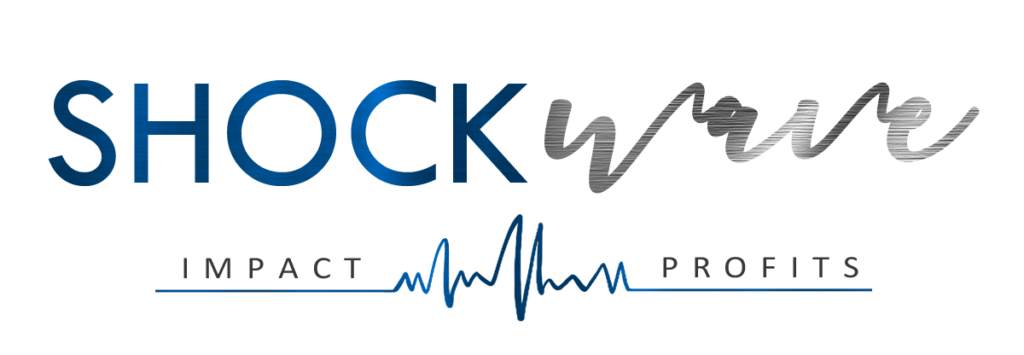When, How, and Why to Update Your SOPs

Introduction
In business, a few statements ring true above all others–regardless of what industry you’re in. One of those statements is that NOTHING should ever stay stagnant. Your business is either growing or dying–period. With emerging technologies, employee changes, new offers and everything in between, your business is always on the move.
What this means is that you need to constantly adapt in order to flourish. While many business owners understand this implicitly, there’s one area that they tend to forget: the SOPS.
Your standard operating procedures should be as dynamic as any other aspect of your business. Updated SOPs allow you to keep up with the changes that happen to you and around you. Yet most business owners keep their SOPs static for extended periods of time.
In this post, we’ll discuss why your SOPs are so important and when you should update them to maximize growth & employee productivity.

Why SOPs Are So Important
Let’s first establish what SOPs are. Standard operating procedures are step-by-step instructions to help employees carry out all operations of the business. The goal of these SOPS is to ensure clear expectations for each role and produce consistently strong results.
In the same way that a key hindrance to sales is buyer confusion, employee confusion provides just as many problems.
Imagine for a second what Lewis & Clark’s expedition would have looked like if they didn’t have compasses to guide them. There’s a good chance New Orleans and its famous Mardi Gras festival wouldn’t even exist (how scary to think about that…)
You should approach your business the same way. Your SOPs act as the compass to guide employees and drive the business forward.
Few things frustrate me more than business owners who say, “I don’t really need detailed SOPs. That’s so much work. Besides, we’re more spontaneous than that!”
Every time I hear this, I want to bash my head into the wall. Really??? You want to fly by the seat of your pants and wing it in the name of “spontaneity”?! Well, good luck with that…don’t come crying to me when your business plan crashes in a couple of months.
SOPs discourage lazy “bandaid fix” thinking. Instead, they promote long term stability and growth. And a business is really only as successful as its long term vision.
When to Update Your SOPs
Now that we’re clear on what SOPs are and why they’re critical for all companies, let’s address when you should update your SOPs.
This is where most business owners get it wrong. So many of them keep the exact same operating procedures for years at a time–even though their business continues to evolve. Not good.
There’s no set rule here, but our recommendation is that you aim to update your SOPs every 6 months, or at least re-evaluate them on that timeline.
If you find that some procedures are good to stay as they are, that’s fine. But odds are that you’ll notice significant areas for improvement.
For example, your SOP for onboarding new clients might be razor sharp, but the one for sales calls is missing key steps–resulting in low conversions. Or vice versa.
At the 6 month mark, a few guiding questions to ask yourself about the SOPs are as follows:
- Are they still relevant?
- Businesses can change a lot in 6 months so you want to make sure that your operating procedures reflect all the shifts you’ve experienced
- Are they producing the results that you want?
- You might notice that one area of your business is thriving while another is lagging. A reason for this could be expectations set by the SOPs. For any part of your business that’s underperforming, a good first step is to look at where your SOPs could be improved.
- Is there a 100% adoption rate from employees?
- This one is critical. If you’re getting consistent feedback from employees that they’re confused about certain steps in the SOPs, then you need to immediately address those concerns. This will help you improve productivity and compliance.

How to Update SOPs
Okay, now you know when to update your SOPs; next, let’s talk about how.
The best practice is to put ONE person in charge of each SOP. Why? A couple reasons.
First, it’s just most efficient to have one person in charge. Employees want to know exactly who they should report to, so having a clear chain of command for SOPs is critical.
And second, it empowers your individual employees to practice leadership. By taking ownership of a key part of the business, they’ll gain confidence and continue to develop important organizational skills.
With that being said, it’s important that the SOP updating process is a collaborative, iterative one. Even if you’re the person directly responsible for a particular SOP, you should absolutely consult with other employees to get their feedback.
If you’re the business owner, it’s especially important to ask for your employees’ input–because they’re the ones in the trenches focusing on the nitty gritty details. You need the overall vision you have for the business to perfectly align with the daily tasks they’re performing.
Everyone has different working styles, so you want to make sure that all your employees feel represented in the workflow for your SOPs.
Better yet, as the person responsible for updating a certain SOP, you should also solicit feedback from people who work in different divisions of the company. Why? Because one SOP indirectly affects other parts of the business, too. Make sure you cover all your bases!
The key is to be extra detail-oriented during this process. Think about it for a second:
SOPs are the backbone of your business. They are the anchor that directs all actions in the company. Therefore, it’s worth it for you to be painstakingly thorough and get it right.
When requesting feedback from employees, here are a few questions to ask:
- Could a certain task be handled more efficiently?
- Which parts of the current SOP are most clear?
- Which parts of the current SOP are least clear?
- What do you wish you knew before you started this role?
The possibilities are endless in terms of how to collect feedback during this process. Have some fun with it and get creative in the questions that you ask. The more detailed answers you receive, the better.
When you start creating the updated SOPs based on these responses, the first thing you want to do is explain WHY the change is being made. This way, all employees are on the same page about the importance of the update and how it fits into the bigger picture of your long-term vision.
From there, get to writing!

Improving Compliance With New SOPs
Congrats, you now have an updated set of SOPs! You’re well on your way to ensuring even more productivity and growth in your business. The final step of the SOP process, then, is to improve compliance from your employees. Because SOPs are useless unless they’re followed correctly.
Asking for feedback during the collaboration process was an excellent way to start–good thinking on your part!
By including your employees from the beginning, you immediately let them know that they’re valued members of the team. They feel that their voice is heard and the result is that they’re more likely to stick to the new SOPs.
Another benefit of making the SOP updating process collaborative is that you improve team communication and cohesion. No one wants to feel like everything is an overbearing top-down process. Therefore, approaching this important aspect of the business as a team was another smart decision.
There are additional ways to improve compliance, too. Detailed trainings and check-ins go a long way towards helping all employees get behind the new SOPs.
This provides yet another reason why you should put just one person in charge of each SOP: you minimize confusion. Having one person check-in about the effectiveness of a certain procedure is efficient and clear. Any more than that and you run the risk of having “too many cooks in the kitchen.”
These check-ins offer a great opportunity to receive constant feedback about what’s working and what’s outdated in your SOPs.
For a more advanced compliance tool, you can build out an “accountability scorecard.” This way, the check-ins become more of a productive two-way dialogue. Employees give feedback AND you can score them (or they can score themselves) on how well they comply with the SOPs. This helps everyone in the business note areas for improvement–all in the spirit of continued growth. Win-win!
Conclusion
“But wait, won’t such a detailed process prevent my team from being creative?!”
Of course not! No one is saying that your SOPs should be tyrannical and overly rigid. Think of them as a template to follow, with room for innovation. But make no mistake about it, creativity without guidance is just chaos.
Standard operating procedures are the linchpin of your business. Without them, you’re like a chicken with its head cut off, frantically trying to get stuff done but never knowing whether your actions are moving the needle.
SOPs are your chance to methodically build out your long-term vision while providing a clear framework for all employees to follow.
Get these right and you’re poised for consistent, explosive growth. As we said at the beginning of this post, the only thing guaranteed for your business is change. Any person or business who stays static gets complacent. And complacency translates to failure, since growth or failure are your only 2 options as an entrepreneur.
By updating your SOPs regularly and constantly getting feedback about their effectiveness, you’re making a smart investment in your business’ success–one that pays huge dividends in the long-run.

